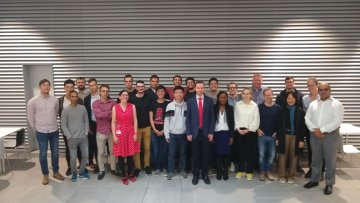Financial modelling and utilisation of a diverse range of data sets in oil markets
Abstract
We will present three problems that we are interested in:
Forecast of volatility both at the instrument and portfolio level by combining a model based approach with data driven research
We will deal with additional complications that arise in case of instruments that are highly correlated and/or with low volumes and open interest.
Test if volatility forecast improves metrics or can be used to derive alpha in our trading book.
Price predication using physical oil grades data
Hypothesis:
Physical markets are most reflective of true fundamentals. Derivative markets can deviate from fundamentals (and hence physical markets) over short term time horizons but eventually converge back. These dislocations would represent potential trading opportunities.
The problem:
Can we use the rich data from the physical market prices to predict price changes in the derivative markets?
Solution would explore lead/lag relationships amongst a dataset of highly correlated features. Also explore feature interdependencies and non-linearities.
The prediction could be in the form of a price target for the derivative (‘fair value’), a simple direction without magnitude, or a probabilistic range of outcomes.
Modelling oil balances by satellite data
The flow of oil around the world from being extracted, refined, transported and consumed, forms a very large dynamic network. At both regular and irregular intervals, we can make noisy measurements of the amount of oil at certain points in the network.
In addition, we have general macro-economic information about the supply and demand of oil in certain regions.
Based on that information, with general information about the connections between nodes in the network i.e. the typical rate of transfer, one can build a general model for how oil flows through the network.
We would like to build a probabilistic model on the network, representing our belief about the amount of oil stored at each of our nodes, which we refer to as balances.
We want to focus on particular parts of the network where our beliefs can be augmented by satellite data, which can be done by focusing on a sub network containing nodes that satellite measurements can be applied to.


